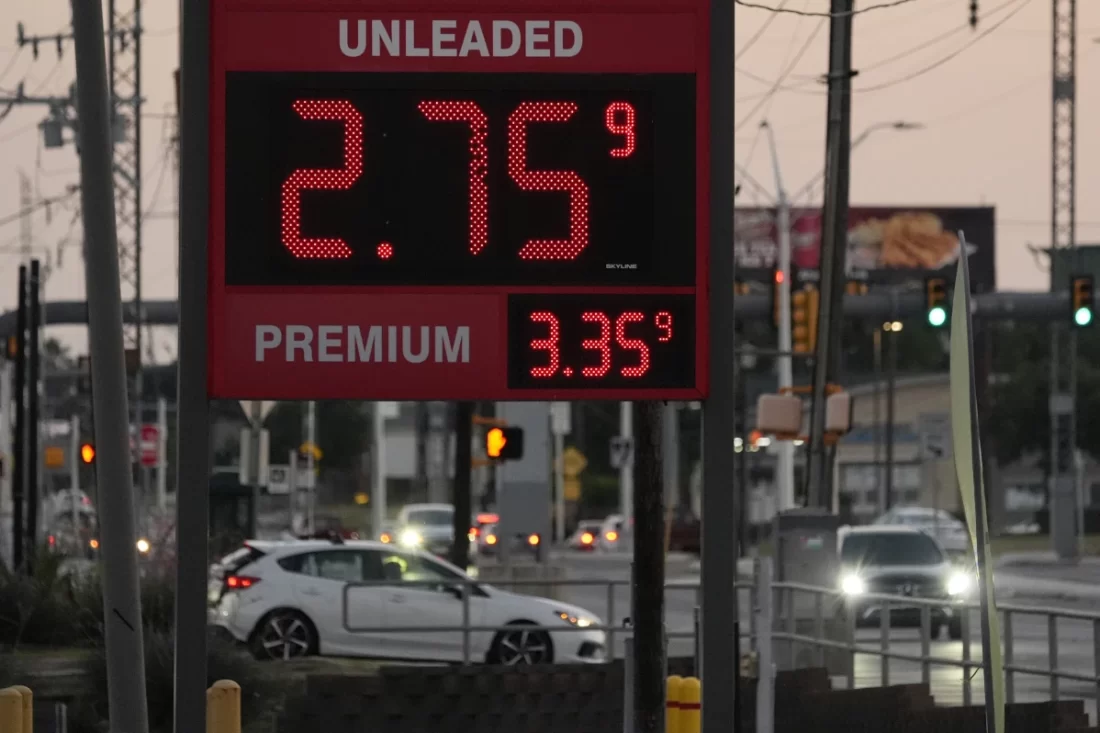
Gas Prices Drop Across the U.S., Offering Relief to Drivers
New York (AP) — Gas prices are once again on the decline across the United States, bringing some relief to drivers now paying less to fill up their tanks. The national average for gas prices on Monday stood around $3.44 per gallon, according to AAA. This figure represents a drop of about 9 cents from the previous week, marking the largest one-week decline recorded by the motor club so far in 2024. Additionally, Monday’s average is more than 19 cents lower than a month ago and over 14 cents below the level seen at this time last year.
Reasons Behind the Decline
Industry analysts attribute the recent fall in prices to a combination of factors including tepid demand, strong supply, and relatively stable global oil prices. AAA spokesperson Andrew Gross noted, “Demand is just kind of shallow,” pointing to trends seen last year and potential lingering impacts of the COVID-19 pandemic. Traditionally, post-Memorial Day demand would increase, but that trend seems to have diminished.
Data from the Energy Information Administration last week showed that U.S. gasoline demand slipped to about 8.94 million barrels a day. While this number might still seem high, it falls short of the pre-pandemic consumption levels of around 10 million barrels a day.
Contributing Factors
Several elements are contributing to the current downward trend in gas prices. High prices following Russia’s invasion of Ukraine in 2022 and persistent inflation have led many Americans to modify their driving habits. The increased presence of fuel-efficient and electric vehicles on the road also plays a role.
Seasonal factors are also in play. Patrick De Haan, head of petroleum analysis at GasBuddy, explained that gas prices typically ease in early summer due to increased refinery capacity. With refinery maintenance completed, output increases, leading to a rise in supply and a corresponding drop in prices. De Haan added that U.S. refinery utilization is at some of its highest levels since the pandemic.
Oil Prices and Their Impact
The decline in gas prices is also influenced by relatively stable oil costs. West Texas Intermediate crude, the U.S. benchmark, has remained in the mid-$70s per barrel range in recent weeks, closing at under $78 a barrel on Monday. Gross noted that crude oil prices typically need to exceed $80 to significantly impact gas prices at the pump.
Oil prices are subject to global factors, including production decisions by OPEC and allied oil-producing countries. While OPEC+ has announced plans to extend cuts, their timetable for restoring some production has kept oil prices relatively stable.
Future Projections
Experts like Gross and De Haan suggest that if there are no major interruptions, gas prices could continue to decline. Seasonal patterns indicate that prices typically drop further in the fall, with the possibility of the national average falling below $3 per gallon by late October or early November.
State-by-State Variations
While gas prices are falling nationwide, some states consistently have cheaper averages due to factors such as nearby refinery supply and local fuel requirements. As of Monday, Mississippi had the lowest average gas price at about $2.94 per gallon, followed by Oklahoma at $2.95 and Arkansas just under $2.97. On the higher end, California, Hawaii, and Washington had the highest average prices, at about $4.93, $4.75, and $4.41 per gallon, respectively.
For drivers across the U.S., the recent decline in gas prices offers a welcome respite from the high costs seen in recent years, with the potential for further decreases in the coming months.










